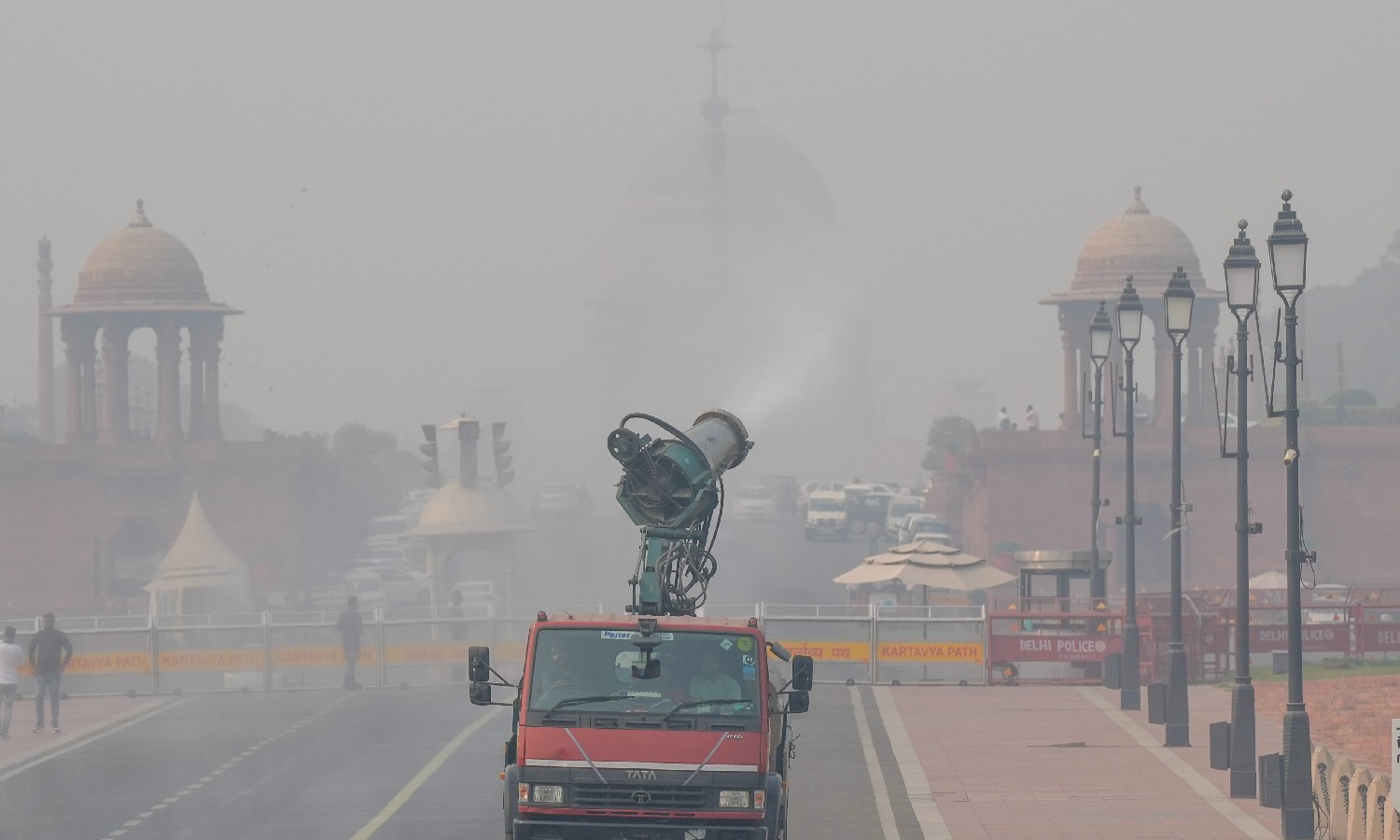Editorial: Delhi in a purple haze
In Delhi, the surprise on Monday morning was that anybody could read the air quality index (AQI) numbers on Pollution Control Board billboards at all.;

Representative Image
It’s now as predictable as night follows day that two things will happen in the weeks following Deepavali in north India, particularly Delhi. One, air pollution will soar to disaster levels and, two, the governments of India, New Delhi, and Punjab will engage in finger pointing. The game will go on until the air clears up enough to allow us to go back to business as usual.
In Delhi, the surprise on Monday morning was that anybody could read the air quality index (AQI) numbers on Pollution Control Board billboards at all. Through the dense fog at 11 am, one could make out that AQI was 487, a metric that spiked to 494 on Tuesday. This qualifies for the ‘Severe Plus’ level and makes this the worst November on record. Delhi was worst off among cities along the Indo-Gangetic plain with others clocking some ‘serious’ numbers.
As is now de rigueur, the usual post-facto measures have been launched in New Delhi, more in hope than confidence. The highest level in the air pollution protocol, Graded Response Action Plan (GRAP) level 4, has been invoked. There are curbs on trucks entering the city, schools have switched to online classes, flights have been delayed due to poor visibility and all construction activity has been put on pause. There is talk of ordering employers to allow work from home. None of this is enough to bring the air back to civilised levels anytime soon.
In exasperation, the Supreme Court has ordered the Delhi government not to rescind GRAP 4 without its permission. Since it’s a time for everyone to be angry at everyone else, the BJP says it’s all the fault of the Aam Aadmi Party government in the national capital, and Chief Minister Atishi Marlena has been busy fending that it’s not only in Delhi that the air has gone bad, it’s bad all along the Ganga.
Everyone’s smart enough to elude responsibility, but not accountable enough to propose some solutions. Why, it’s come to light this year that the farmers of Punjab, who contribute to 40 per cent of the pollution in Delhi, wait until late afternoon to burn their stubble. Apparently, by then NASA’s satellites would have passed overhead and the fires would go undetected, except by geostationary satellites. We need to be more than clever by half to bring some clarity to the air over north India. The Delhi government should learn from international examples and switch to systemic solutions rather than rely on mitigation always.
La Paz, the capital of Bolivia, has overhauled its public transportation system with mandatory adoption of electric buses and cable cars to reduce reliance on private vehicles, thereby decreasing emissions. Beijing has reduced air pollution through stringent regulations on vehicle emissions and industrial discharge, in addition to investing heavily in public transport powered by EVs. Singapore has adopted a comprehensive congestion pricing scheme to discourage car use in busy areas. Amsterdam’s success with bicycling as the primary mode of city transport is now a textbook example of reducing vehicular emissions. London has established ultra low emission zones where vehicles are charged if they do not meet strict emission standards. As for the stubble problem in Punjab, we have companies that work with crop stover to generate energy or produce particle boards. Successful alternatives exist; they only need us to accept responsibility rather than accuse.

